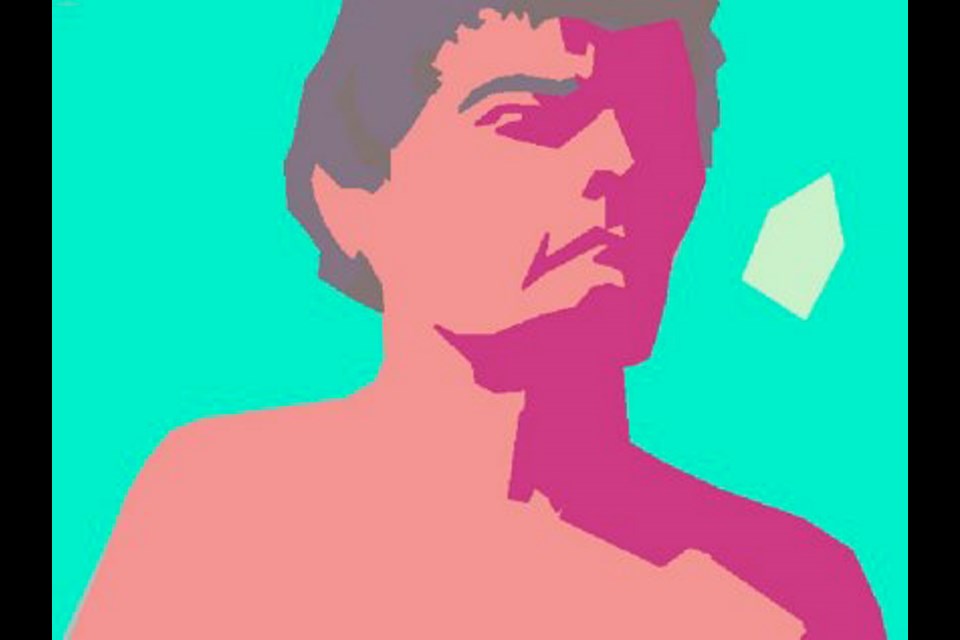 Last year, the Special Collections of the University of Victoria’s library received the papers of Victoria artist (and UVic graduate) Glenn Howarth. Amid the sketchbooks, diaries and photo albums was a cache of old-style floppy discs. Between 1981 and 1985, Howarth, a painter, experimented with artistic applications of the Telidon project, a Canadian prototype of the World Wide Web. Those floppy discs were tantalizing to John Durno, who is a computer specialist at the UVic Mearns Centre for Learning, and he is about to reveal their contents at Ideafest at UVic on Wednesday.
Last year, the Special Collections of the University of Victoria’s library received the papers of Victoria artist (and UVic graduate) Glenn Howarth. Amid the sketchbooks, diaries and photo albums was a cache of old-style floppy discs. Between 1981 and 1985, Howarth, a painter, experimented with artistic applications of the Telidon project, a Canadian prototype of the World Wide Web. Those floppy discs were tantalizing to John Durno, who is a computer specialist at the UVic Mearns Centre for Learning, and he is about to reveal their contents at Ideafest at UVic on Wednesday.
Even in the early 1980s, Howarth’s work was rarely seen, though it was part of the Canadian entry at the Sao Paolo Biennale of Art in 1983. Since then, the software to run it has disappeared, and Durno was fortunate to find one of only two remaining Telidon monitors.
“These things are incredibly rare,” Durno chuckled, as he fired up the clunky machine. He found it at the Spark Radio Museum, a volunteer-run operation on the grounds of the old Riverview psychiatric hospital in Coquitlam.
“The Telidon network essentially ran off decoder boxes which would be hooked up to people’s television sets,” Durno explained. “You would have a remote control unit, and could page through menus to look up weather and things. It was an all-Canadian technology.” Canada’s Department of Communications funded the research at UVic at the time, where staff member Ernest Chang wrote some of the software.
Dave Godfrey, head of the Creative Writing Department, brought Howarth in to work on the project, offering him space at his company, Softwords, to test-drive what was the first “paint” program.
In his office last week, Durno set in motion the collection of Howarth paintings for me, which slowly developed on the screen before us. In the beginning, the artist had a very limited palette of “three-bit colour” — red, green, blue, magenta, cyan, yellow and six shades of grey. There was no way to blend the colours.
“That was it,” Durno said. A blocky portrait of Dave Godfrey emerged, revealing its progress as Howarth plotted shapes and filled them in with colours. He had no opportunity to adjust the order of the elements — they showed up in the order in which he drew them.
“It was remarkable what he was able to do with the incredibly primitive technology,” Durno commented. “These would have taken hours and hours to create.” Alone in Western Canada, Howarth as an unpaid “artist in residence” created hundreds of images.
An arcane technical manual from 1979 miraculously showed up in the UVic library, enabling Durno to recreate the image-processing software. He was able to run the later material with a program called DOSbox, available online for retro-gamers.
South of the border, the first commercial paint program was written for the Graphic Mac computer in 1984, so Howarth’s work was a little ahead of its time. The images appearing on the screen in front of me “marked the first time someone who wasn’t primarily a computer technologist got in there,” Durno noted.
This project is the result of a remarkable confluence of resources: the discovery of obsolete discs by someone who could write the software to read them; finding the rare piece of hardware that could play them; and the fact that these are images by one of Victoria’s most interesting artists. Chang, Godfrey, Howarth and Durno: it’s a UVic story through and through, and a chapter of our Canadian story, too.
An overview of Howarth’s life, drawn from his papers and the University Art Collection, will later be installed at the University Library’s Maltwood Prints and Drawings Gallery from June 4 to Oct. 17.
Retro-Computing: Telidon Graphics by Glenn Howarth (created 1981-85); 1-4 p.m. on Thursday, March 10, in room 129 on the ground floor of the main University of Victoria library. John Durno will be giving a half-hour presentation on the Telidon restoration project at 1:30, and a demo of the Telidon decoder at 2 p.m. A small selection of Telidon graphics will be on a looped display for the whole three hours.
Veronika Irvine has a PhD in computer science with a master’s degree in applied mathematics. She also makes bobbin lace.
Bobbin lace is a fibre art form in which intricate and delicate patterns are created by braiding together many threads.
“Over its 500-year history, new tessellation patterns and techniques have been developed through trial and error and hands-on experience — a very time-consuming process,” Irvine has written. “For my PhD thesis, I have developed a mathematical model for bobbin lace design using graph theory, group theory and braid theory.”
The object of her research is to reveal the patterns behind these complex constructions, and make these patterns accessible for new and innovative applications.
“In the process,” she says, “I am exploring interesting problems in discrete mathematics such as the enumeration of directed graphs on the torus, doubly periodic k-ary arrays and osculating lattice paths.”
Sounds like fun, but is it useful? Irvine notes that “a less obvious application is biomedical engineering. Lace could be used to create a neural network or a network of arteries. The open but structurally strong nature of lace makes it ideal for integrating with organic tissues like muscle.”
Learn more at tesselace.com.
Victorian Lace Tessellations: A lecture on applied mathematics and bobbin lace design, Friday March 11, 1 to 2:30 p.m. in the Engineering and Science Building (room ECS 660).
UVic’s fifth annual Ideafest runs March 7-12. Go to uvic.ca/ideafest



